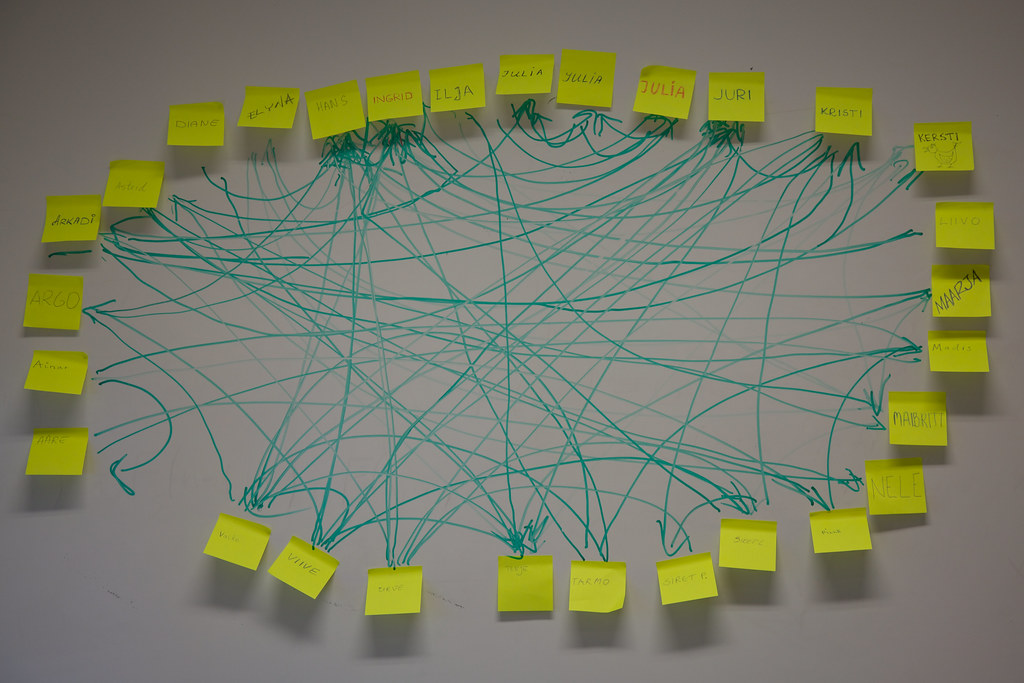Does networking make you more creative?
..businesspeople with entropic networks full of weak ties were three times more innovative than people with small networks of close friends..." Via Imagine: How Creativity Works: Ruef then analyzed each of these entrepreneurs using an elaborate metric of innovation. He measured the number of patents they’d applied for and kept track of all their trademarks. He rated the originality of their products and gave them bonus points if they’d “entered an unexploited niche” or pioneered a new marketing method. He…
2 minutes
Is Your Brain Disorganized? Research Says That’s A Good Thing
Where Good Ideas Come From: The Natural History of Innovation, Steven Johnson posits that "the more disorganized your brain is, the smarter you are" in reference to the results of a neuroscience experiment by Robert Thatcher. Across the board, in Johnson's book and other sources it seems pretty clear that creativity is messy. Ideas need to be sloshing around or crashing in to one another to produce breakthroughs: Johnson cites research showing that the volume of ideas bouncing about…
2 minutes
Are hobbies the key to creative breakthroughs?
erlapping different projects allows new connections to burgeon at the margins, helping to create innovative ideas. Via Where Good Ideas Come From: The Natural History of Innovation: Legendary innovators like Franklin, Snow, and Darwin all possess some common intellectual qualities— a certain quickness of mind, unbounded curiosity— but they also share one other defining attribute. They have a lot of hobbies... ...It is tempting to call this mode of work “serial tasking,” in the sense that the projects rotate one…
1 min read
What are the most creative places in the world?
e biggest cities. Via Where Good Ideas Come From: The Natural History of Innovation: A city that was ten times larger than its neighbor wasn’t ten times more innovative; it was seventeen times more innovative. A metropolis fifty times bigger than a town was 130 times more innovative. Kleiber’s law proved that as life gets bigger, it slows down. But West’s model demonstrated one crucial way in which human-built cities broke from the patterns of biological life: as cities get…
2 minutes
How does Chris Rock create such brilliant comedy?
's relentlessly tested and tweaked onstage over a period of months. Via Little Bets: How Breakthrough Ideas Emerge from Small Discoveries: When beginning to work on a new show, Rock picks venues where he can experiment with new material in very rough fashion. In gearing up for his latest global tour, he made between forty and fifty appearances at a small comedy club, called Stress Factory, in New Brunswick, New Jersey, not far from where he lives. In front of…
2 minutes
Does quantity lead to quality?
can. Making mistakes can be vital to improvement. Via Where Good Ideas Come From: The Natural History of Innovation: “The errors of the great mind exceed in number those of the less vigorous one.” This is not merely statistics. It is not that the pioneering thinkers are simply more productive than less “vigorous” ones, generating more ideas overall, both good and bad. Some historical studies of patent records have in fact shown that overall productivity correlates with radical breakthroughs…
1 min read
Yes, science shows creative people are more likely to be crazy
ction writers are 10 times more likely to be bipolar. In poets it's 40 times more likely. Via The Storytelling Animal: How Stories Make Us Human: In studies of deceased writers— based on their letters, medical records, and published biographies— and in studies of talented living writers, mental illness is prevalent. For example, fiction writers are fully ten times more likely to be bipolar than the general population, and poets are an amazing forty times more likely to struggle with…
3 minutes
3 Lessons From History’s Greatest Geniuses That Will Make You More Creative
Reflect On What You Are Trying To Accomplish Don't rush in. Plan. Think about what you're trying to do and what it takes to succeed. Via Creating Minds: An Anatomy of Creativity Seen Through the Lives of Freud, Einstein, Picasso, Stravinsky, Eliot, Graham, and Ghandi: ...the lessons that the rest of us can learn from individuals who are highly creative. I culled three: (1) Creative individuals spend a considerable amount of time reflecting on what they are trying to…
2 minutes








